The locust trees’ bloom peaked last week, blasting a vibrant white against a sky-blue ceiling. That, according to Chesapeake lore, should mean the season’s first soft crabs are plentiful. For a last meal I’d be hard pressed not to request a fat slab of soft crab meat. Slow smoked pork is in the mix.
Yet, as much as I may cringe at regulating such a succulent seafood delicacy to common bait, for fishermen looking to land big drums, reds, or blacks in Virginia waters or blacks in Maryland, soft crabs are a killer bait. (Clams are a close second in Virginia.)
The sweet spot of spring fishing is here, arguably a time of rich options to add to your catch list. My email has been lighting up the past several weeks, photos of big ocean run rockfish, white shad, red, and black drum. If all goes according to plan, we should see flounder, tunas, sharks, specks and the other drums, spot and croakers. In Southern Bay waters, sheepshead, spadefish, and cobia are perhaps less common, but coveted sport fish nonetheless.
So until the summer solstice arrives, and daylight begins to swing on its downward pendulum, I plan to soak it all in. Here are some ideas to spark your next fishing adventure.
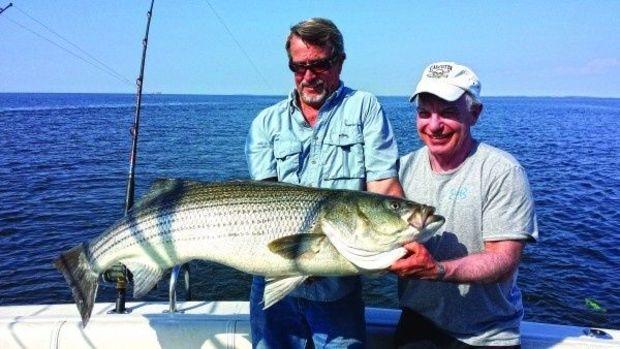 Virginia
Ric Burnley
Virginia
Ric Burnley says, “Summer fishing will heat up in July with Southeast Virginia firing on all cylinders. Look for the Chesapeake Bay Bridge-Tunnel to hold sheepshead, triggerfish, spadefish, and flounder.”
If you’re looking for sheepshead, you could find them holding tight to the pilings and rocks. “Drop a fiddler crab on a single-dropper bottomrig. Choose a strong, 3/0 hook and use 50-pound fluorocarbon leader for best results. Spadefish and triggerfish will also swarm around the pilings and islands,” he suggests. “You’d do best by rigging a No.1 red hook to the end of a four-foot length of 30-pound fluorocarbon and pinching a couple of split shots two feet above the hook, use a small piece of clam for bait. Look for schools of spadefish and triggers swirling just below the surface.
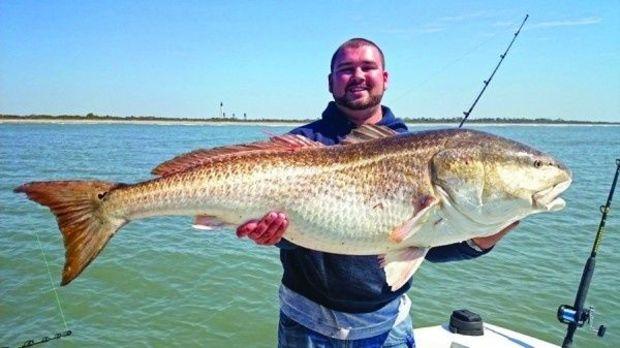
“Flounder fishing will be flat-out awesome in mid summer. Anglers will catch fish by drifting three-way rigs and squid/minnow sandwiches over rough bottom and along channels. Some of the best action will be around the CBBT islands and rocks,” he predicts. “Bounce a two- to three-ounce bucktail and Gulp! curly tail or strip bait tight to the structure. Live bait will catch the biggest flatties. Dangle a small spot or croaker on a three-way rig for trophy doormats.”
Are you interested in catching a cobia? The Virginia waters are a great bet, Ric says. “Anglers who can tear themselves away from the CBBT will find cobia invading the Lower Bay. Anchor up on the shoals and fish cut bunker or live eels on fishfinder rigs. Or, drive around looking for cobia swimming on the surface,” he suggests “When you find a fish sunning, cast a three-ounce bucktail and curly tail. Orange is a favorite color, but I like white on white or white and red. Some guys like pink.”
No Virginia summer fishing prediction would be complete without including the bluewater scene. “Offshore fishing will be at its best for tuna, dolphin, and wahoo. Crews will patrol the edge of the Gulf Stream, humps and valleys and canyons trolling SeaWitch skirts and ballyhoo,” he says. “Get baits in the water early or fish late for the best shot at a big eye tuna. They love an Ilander SeaStar or Hawaiian Eye and horse ballyhoo.”
Maryland Bay
I’m conflicted on where to place
Captain Tyler Nonn of Tidewater Charters—Virginia or Maryland? —since he goes to where the fish are. And this month he tells PropTalk that means he’ll put a lot of miles on his trailer and truck.
He plans to spend the next several weeks in the Lower Bay sight-fishing for cobia, cruising buoys, and looking for them basking in the sun, along current eddies where the man in the brown suit likes to hang out. His clients will chuck lures at them, hoping to fool these bruising fighters into smashing an artificial lure.
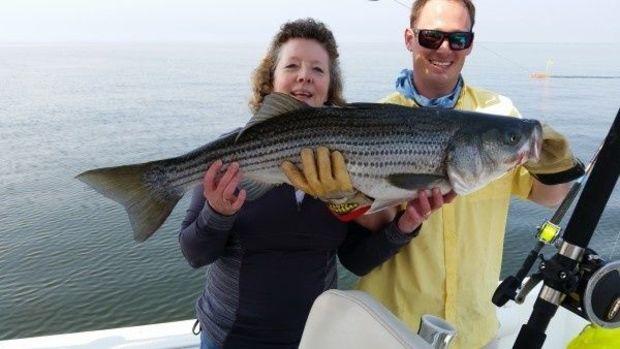
When he’s not fishing at the Bay’s mouth, he and his fishing clients will be jigging with light tackle the lumps, points, and humps between the mouth of the Choptank River and Bloodsworth Island, looking for rockfish and blues later. He expects the strong 2011-year class of stripers to provide a lot of action well into the fall.
Captain Harry Nield on the Kingfish II says he’s done rockfishing for the time being, and he and his first mate are gearing up for drum and croaker. “The blacks are here now, and the reds are trickling in as well,” he says. “Croakers are also here in decent numbers and should only get better as we close in on June, which is the best time for them in our area (of Tangier Sound).”
Captain Kevin Josenhans of Josenhans Fly Fishing will spend the next month fishing from Crisfield for specks, rockfish, bluefish, and flounder. “Maybe a few early redfish will make their way up to Tangier Sound from their winter home down south,” he says optimistically. “The 2011-year class of stripers should give us plenty of action during the summer months as they reach the 20-to-22-inch size range.” Captain Josenhans adds that he’s “hoping for a good flounder jigging season, as we have enjoyed only marginal success with the flatfish in recent years.”
Captain Mark Galasso of Tuna the Tide reports there seems to be good numbers of smaller rockfish starting to show at the mouths of the rivers and in the smaller bays. “In June and July we’ll be prowling the shallows looking for topwater opportunities,” he says. “Jigging should be heating up as well as live lining when the spot show up. A few blues should start firing up later in June. Stock up on soft plastics and metal jigs, and remember the new size limits. We now have a 20-inch minimum.”
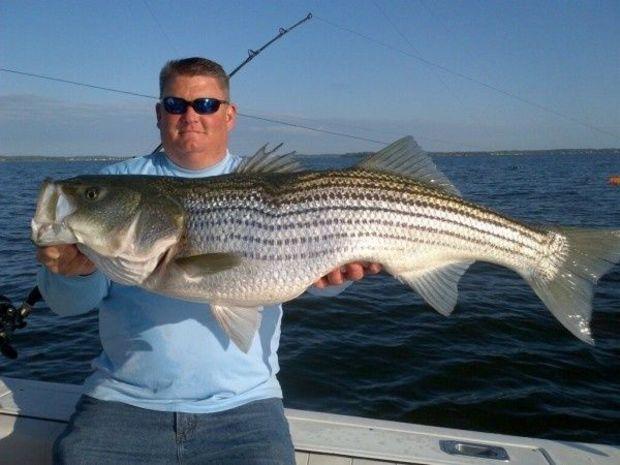 Delmarva Coast
Delmarva Coast
Onboard the charter boat MARLI, you can expect
Captain Mark Hoos and crew to be fishing the bluewater from her home port of Ocean City, MD. “The yellowfin tuna bite should be red hot with a few gaffer dolphins mixed in the catch,” he predicts. “The first white marlin should show anytime. The larger bluefins (75-125 pounds) will also make their appearance around the Fourth of July. Trolling will be the dominant pattern this time of year.”
The elder, and some would say infinitely wiser
Burnley tells PropTalk, “The number one fish in the summer is the summer flounder. Depending on water temperature, they may be found over reef sites in the Delaware Bay or in the ocean.”
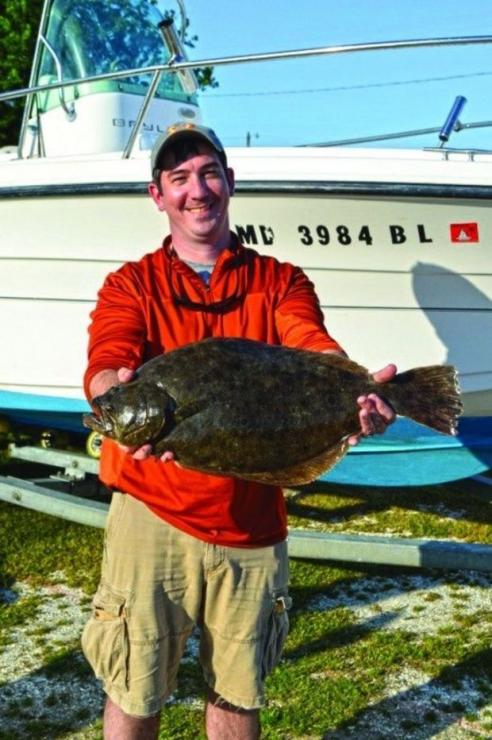
He says in 2014 the water in the Bay was “too warm for flounder, so they moved to the ocean. This year, who knows? Wherever they are, a bucktail with a strip of squid, fresh fish, or Gulp! can be very effective.” The veteran fishing writer adds that a more conventional rig would be a Delaware Bay Green Machine decorated with a live minnow, squid strip, or Gulp! “The important thing is to present the bait directly on top of reef structure,” he suggests.
Eric says another summer favorite is the croaker. “Those of us who enjoy the simple pleasure of catching fish without much hassle will be targeting croaker. These fish will eat almost anything, put up a dogged fight and taste pretty good as the main course at a fish fry. Last year the bigger croakers were caught in the tidal rivers and creeks that empty into the Delaware Bay. Small pieces of squid or fish on a circle hook presented on the bottom will be enough to tempt a croaker.”
Over the next four weeks,
Captain Chuck with First Light Charters plans to fish for sea bass on the local spots such as Old Grounds and B Buoy among others. His clients will fish squid rigs tipped with cut bait. Beginning in early June, when the flounder should begin to migrate onto reefs and wrecks, he’ll put his clients on them, using flounder rigs with bluefish bellies. “Another thing we like to do, early in the morning or at dusk, is throw topwater plugs for stripers,” he says. “We’ve had good luck at the Outer Wall or at the jetty in Indian River inlet.”
by Capt. Chris D. Dollar Virginia
Ric Burnley says, “Summer fishing will heat up in July with Southeast Virginia firing on all cylinders. Look for the Chesapeake Bay Bridge-Tunnel to hold sheepshead, triggerfish, spadefish, and flounder.”
If you’re looking for sheepshead, you could find them holding tight to the pilings and rocks. “Drop a fiddler crab on a single-dropper bottomrig. Choose a strong, 3/0 hook and use 50-pound fluorocarbon leader for best results. Spadefish and triggerfish will also swarm around the pilings and islands,” he suggests. “You’d do best by rigging a No.1 red hook to the end of a four-foot length of 30-pound fluorocarbon and pinching a couple of split shots two feet above the hook, use a small piece of clam for bait. Look for schools of spadefish and triggers swirling just below the surface.
Virginia
Ric Burnley says, “Summer fishing will heat up in July with Southeast Virginia firing on all cylinders. Look for the Chesapeake Bay Bridge-Tunnel to hold sheepshead, triggerfish, spadefish, and flounder.”
If you’re looking for sheepshead, you could find them holding tight to the pilings and rocks. “Drop a fiddler crab on a single-dropper bottomrig. Choose a strong, 3/0 hook and use 50-pound fluorocarbon leader for best results. Spadefish and triggerfish will also swarm around the pilings and islands,” he suggests. “You’d do best by rigging a No.1 red hook to the end of a four-foot length of 30-pound fluorocarbon and pinching a couple of split shots two feet above the hook, use a small piece of clam for bait. Look for schools of spadefish and triggers swirling just below the surface.
 “Flounder fishing will be flat-out awesome in mid summer. Anglers will catch fish by drifting three-way rigs and squid/minnow sandwiches over rough bottom and along channels. Some of the best action will be around the CBBT islands and rocks,” he predicts. “Bounce a two- to three-ounce bucktail and Gulp! curly tail or strip bait tight to the structure. Live bait will catch the biggest flatties. Dangle a small spot or croaker on a three-way rig for trophy doormats.”
Are you interested in catching a cobia? The Virginia waters are a great bet, Ric says. “Anglers who can tear themselves away from the CBBT will find cobia invading the Lower Bay. Anchor up on the shoals and fish cut bunker or live eels on fishfinder rigs. Or, drive around looking for cobia swimming on the surface,” he suggests “When you find a fish sunning, cast a three-ounce bucktail and curly tail. Orange is a favorite color, but I like white on white or white and red. Some guys like pink.”
No Virginia summer fishing prediction would be complete without including the bluewater scene. “Offshore fishing will be at its best for tuna, dolphin, and wahoo. Crews will patrol the edge of the Gulf Stream, humps and valleys and canyons trolling SeaWitch skirts and ballyhoo,” he says. “Get baits in the water early or fish late for the best shot at a big eye tuna. They love an Ilander SeaStar or Hawaiian Eye and horse ballyhoo.”
Maryland Bay
I’m conflicted on where to place Captain Tyler Nonn of Tidewater Charters—Virginia or Maryland? —since he goes to where the fish are. And this month he tells PropTalk that means he’ll put a lot of miles on his trailer and truck.
He plans to spend the next several weeks in the Lower Bay sight-fishing for cobia, cruising buoys, and looking for them basking in the sun, along current eddies where the man in the brown suit likes to hang out. His clients will chuck lures at them, hoping to fool these bruising fighters into smashing an artificial lure.
“Flounder fishing will be flat-out awesome in mid summer. Anglers will catch fish by drifting three-way rigs and squid/minnow sandwiches over rough bottom and along channels. Some of the best action will be around the CBBT islands and rocks,” he predicts. “Bounce a two- to three-ounce bucktail and Gulp! curly tail or strip bait tight to the structure. Live bait will catch the biggest flatties. Dangle a small spot or croaker on a three-way rig for trophy doormats.”
Are you interested in catching a cobia? The Virginia waters are a great bet, Ric says. “Anglers who can tear themselves away from the CBBT will find cobia invading the Lower Bay. Anchor up on the shoals and fish cut bunker or live eels on fishfinder rigs. Or, drive around looking for cobia swimming on the surface,” he suggests “When you find a fish sunning, cast a three-ounce bucktail and curly tail. Orange is a favorite color, but I like white on white or white and red. Some guys like pink.”
No Virginia summer fishing prediction would be complete without including the bluewater scene. “Offshore fishing will be at its best for tuna, dolphin, and wahoo. Crews will patrol the edge of the Gulf Stream, humps and valleys and canyons trolling SeaWitch skirts and ballyhoo,” he says. “Get baits in the water early or fish late for the best shot at a big eye tuna. They love an Ilander SeaStar or Hawaiian Eye and horse ballyhoo.”
Maryland Bay
I’m conflicted on where to place Captain Tyler Nonn of Tidewater Charters—Virginia or Maryland? —since he goes to where the fish are. And this month he tells PropTalk that means he’ll put a lot of miles on his trailer and truck.
He plans to spend the next several weeks in the Lower Bay sight-fishing for cobia, cruising buoys, and looking for them basking in the sun, along current eddies where the man in the brown suit likes to hang out. His clients will chuck lures at them, hoping to fool these bruising fighters into smashing an artificial lure.
 When he’s not fishing at the Bay’s mouth, he and his fishing clients will be jigging with light tackle the lumps, points, and humps between the mouth of the Choptank River and Bloodsworth Island, looking for rockfish and blues later. He expects the strong 2011-year class of stripers to provide a lot of action well into the fall.
Captain Harry Nield on the Kingfish II says he’s done rockfishing for the time being, and he and his first mate are gearing up for drum and croaker. “The blacks are here now, and the reds are trickling in as well,” he says. “Croakers are also here in decent numbers and should only get better as we close in on June, which is the best time for them in our area (of Tangier Sound).”
Captain Kevin Josenhans of Josenhans Fly Fishing will spend the next month fishing from Crisfield for specks, rockfish, bluefish, and flounder. “Maybe a few early redfish will make their way up to Tangier Sound from their winter home down south,” he says optimistically. “The 2011-year class of stripers should give us plenty of action during the summer months as they reach the 20-to-22-inch size range.” Captain Josenhans adds that he’s “hoping for a good flounder jigging season, as we have enjoyed only marginal success with the flatfish in recent years.”
Captain Mark Galasso of Tuna the Tide reports there seems to be good numbers of smaller rockfish starting to show at the mouths of the rivers and in the smaller bays. “In June and July we’ll be prowling the shallows looking for topwater opportunities,” he says. “Jigging should be heating up as well as live lining when the spot show up. A few blues should start firing up later in June. Stock up on soft plastics and metal jigs, and remember the new size limits. We now have a 20-inch minimum.”
When he’s not fishing at the Bay’s mouth, he and his fishing clients will be jigging with light tackle the lumps, points, and humps between the mouth of the Choptank River and Bloodsworth Island, looking for rockfish and blues later. He expects the strong 2011-year class of stripers to provide a lot of action well into the fall.
Captain Harry Nield on the Kingfish II says he’s done rockfishing for the time being, and he and his first mate are gearing up for drum and croaker. “The blacks are here now, and the reds are trickling in as well,” he says. “Croakers are also here in decent numbers and should only get better as we close in on June, which is the best time for them in our area (of Tangier Sound).”
Captain Kevin Josenhans of Josenhans Fly Fishing will spend the next month fishing from Crisfield for specks, rockfish, bluefish, and flounder. “Maybe a few early redfish will make their way up to Tangier Sound from their winter home down south,” he says optimistically. “The 2011-year class of stripers should give us plenty of action during the summer months as they reach the 20-to-22-inch size range.” Captain Josenhans adds that he’s “hoping for a good flounder jigging season, as we have enjoyed only marginal success with the flatfish in recent years.”
Captain Mark Galasso of Tuna the Tide reports there seems to be good numbers of smaller rockfish starting to show at the mouths of the rivers and in the smaller bays. “In June and July we’ll be prowling the shallows looking for topwater opportunities,” he says. “Jigging should be heating up as well as live lining when the spot show up. A few blues should start firing up later in June. Stock up on soft plastics and metal jigs, and remember the new size limits. We now have a 20-inch minimum.”
 Delmarva Coast
Onboard the charter boat MARLI, you can expect Captain Mark Hoos and crew to be fishing the bluewater from her home port of Ocean City, MD. “The yellowfin tuna bite should be red hot with a few gaffer dolphins mixed in the catch,” he predicts. “The first white marlin should show anytime. The larger bluefins (75-125 pounds) will also make their appearance around the Fourth of July. Trolling will be the dominant pattern this time of year.”
The elder, and some would say infinitely wiser Burnley tells PropTalk, “The number one fish in the summer is the summer flounder. Depending on water temperature, they may be found over reef sites in the Delaware Bay or in the ocean.”
Delmarva Coast
Onboard the charter boat MARLI, you can expect Captain Mark Hoos and crew to be fishing the bluewater from her home port of Ocean City, MD. “The yellowfin tuna bite should be red hot with a few gaffer dolphins mixed in the catch,” he predicts. “The first white marlin should show anytime. The larger bluefins (75-125 pounds) will also make their appearance around the Fourth of July. Trolling will be the dominant pattern this time of year.”
The elder, and some would say infinitely wiser Burnley tells PropTalk, “The number one fish in the summer is the summer flounder. Depending on water temperature, they may be found over reef sites in the Delaware Bay or in the ocean.”
 He says in 2014 the water in the Bay was “too warm for flounder, so they moved to the ocean. This year, who knows? Wherever they are, a bucktail with a strip of squid, fresh fish, or Gulp! can be very effective.” The veteran fishing writer adds that a more conventional rig would be a Delaware Bay Green Machine decorated with a live minnow, squid strip, or Gulp! “The important thing is to present the bait directly on top of reef structure,” he suggests.
Eric says another summer favorite is the croaker. “Those of us who enjoy the simple pleasure of catching fish without much hassle will be targeting croaker. These fish will eat almost anything, put up a dogged fight and taste pretty good as the main course at a fish fry. Last year the bigger croakers were caught in the tidal rivers and creeks that empty into the Delaware Bay. Small pieces of squid or fish on a circle hook presented on the bottom will be enough to tempt a croaker.”
Over the next four weeks, Captain Chuck with First Light Charters plans to fish for sea bass on the local spots such as Old Grounds and B Buoy among others. His clients will fish squid rigs tipped with cut bait. Beginning in early June, when the flounder should begin to migrate onto reefs and wrecks, he’ll put his clients on them, using flounder rigs with bluefish bellies. “Another thing we like to do, early in the morning or at dusk, is throw topwater plugs for stripers,” he says. “We’ve had good luck at the Outer Wall or at the jetty in Indian River inlet.”
by Capt. Chris D. Dollar
He says in 2014 the water in the Bay was “too warm for flounder, so they moved to the ocean. This year, who knows? Wherever they are, a bucktail with a strip of squid, fresh fish, or Gulp! can be very effective.” The veteran fishing writer adds that a more conventional rig would be a Delaware Bay Green Machine decorated with a live minnow, squid strip, or Gulp! “The important thing is to present the bait directly on top of reef structure,” he suggests.
Eric says another summer favorite is the croaker. “Those of us who enjoy the simple pleasure of catching fish without much hassle will be targeting croaker. These fish will eat almost anything, put up a dogged fight and taste pretty good as the main course at a fish fry. Last year the bigger croakers were caught in the tidal rivers and creeks that empty into the Delaware Bay. Small pieces of squid or fish on a circle hook presented on the bottom will be enough to tempt a croaker.”
Over the next four weeks, Captain Chuck with First Light Charters plans to fish for sea bass on the local spots such as Old Grounds and B Buoy among others. His clients will fish squid rigs tipped with cut bait. Beginning in early June, when the flounder should begin to migrate onto reefs and wrecks, he’ll put his clients on them, using flounder rigs with bluefish bellies. “Another thing we like to do, early in the morning or at dusk, is throw topwater plugs for stripers,” he says. “We’ve had good luck at the Outer Wall or at the jetty in Indian River inlet.”
by Capt. Chris D. Dollar